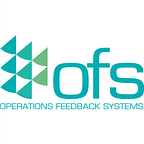Developing an Agile Mindset to Build Better Manufacturing Solutions
Agile is a buzzword that has been floating about the software delivery world for a few years now. But the question remains, how does Agile impact projects and help in our domain?
Agile is a set of guidelines for building and delivering software. These guidelines are defined in the Agile manifesto and related principles that aim to improve the speed and quality of software delivery, enhance collaboration in delivery teams and strengthen communication with customers.
Improving the speed and quality of software delivery
A key feature of Agile development is maintaining a focus on delivering working software, rather than time-consuming upfront requirement gathering and extensive documentation. This drives early and frequent feature delivery, ensuring products meet evolving customer needs.
Development cycles under Agile methodology are often referred to as iterations or sprints and are typically two to four weeks in length. This short cycle results in fast feedback between development teams and customers — meaning new features are released regularly. The continual release of new features, as well as automated testing practices, also improves the quality and stability of products released. This hastens time to market, improves the ability to scale and delivers more features more often with seamless deployments.
Enhancing collaboration in delivery teams
Highly effective Agile teams work to quickly build better products. Building systems that are maintainable, adaptable and testable is key in being able to regularly deliver new features.
Good communication practices are key to knowledge sharing. A concept called ‘Pairing’, which refers to two team members working together on a single solution, often results in better design and early identification of issues and blockers. This early intervention often results in issues being addressed before they slow down the entire team, or potentially put the product at risk.
Agile teams also promote collaboration between various roles in the organization. This prevents an ‘over the fence’ mentality, where roles are siloed and work flows down to the next stage in the development lifecycle with little collaboration. This collaboration ensures that the right thing is built right the first time, with features that fit the requirements.
Strengthening communication with customers
We want to empower manufacturers with tools that help make better decisions and there is no better way than to work with our customers to test and learn together.
Communication with customers is key to ensuring we are solving the right problems and building great features that are both easy to use and useful.
The experimentation and validation of ideas is an opportunity for manufacturers to innovate and contribute to the development of features. Seeking frequent feedback on prototypes and early release features, ensures products are enhanced to fit manufacturing/customer needs.
At OFS we are instilling Agile practices within our development team. By focussing on good software delivery practices, user experience and modern technologies, we can better deliver what our customers need and help them drive better decisions.
Parallels in software development and manufacturing mean having an Agile mindset in manufacturing can have similar benefits. We will be discussing the concept of Agile Manufacturing in an upcoming piece.
Author
Kelly Benson | Technical Lead at OFS
Kelly is Tech Lead at OFS. She has over 17 years development experience and has worked in Perth, London, Melbourne, Sydney and India.
She has experience in all aspects of the development life cycle, a love of Agile and enjoys teaching and sharing good development practices with others.
